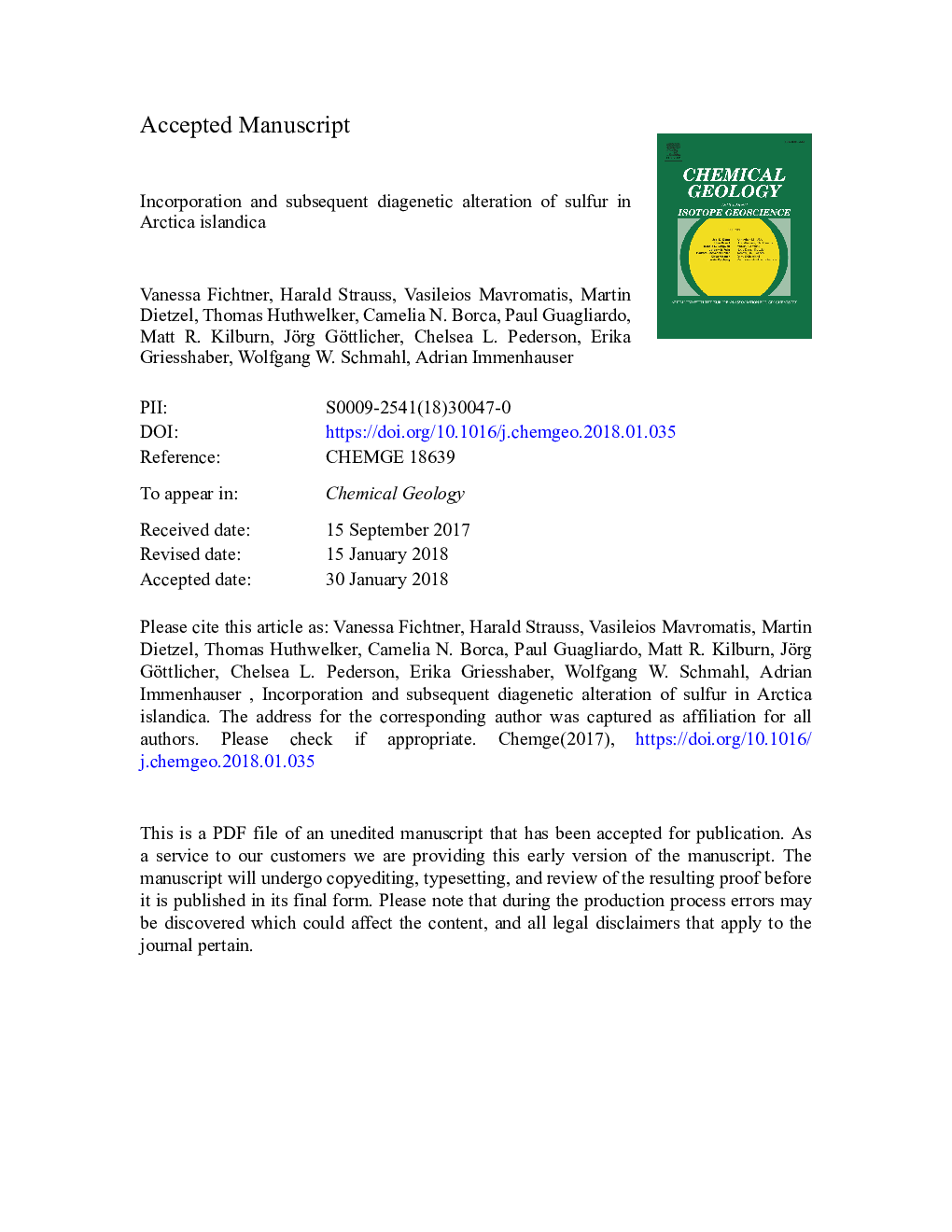| کد مقاله | کد نشریه | سال انتشار | مقاله انگلیسی | نسخه تمام متن |
|---|---|---|---|---|
| 8910320 | 1637492 | 2018 | 48 صفحه PDF | دانلود رایگان |
عنوان انگلیسی مقاله ISI
Incorporation and subsequent diagenetic alteration of sulfur in Arctica islandica
دانلود مقاله + سفارش ترجمه
دانلود مقاله ISI انگلیسی
رایگان برای ایرانیان
کلمات کلیدی
موضوعات مرتبط
مهندسی و علوم پایه
علوم زمین و سیارات
ژئوشیمی و پترولوژی
پیش نمایش صفحه اول مقاله

چکیده انگلیسی
Biogenic carbonates are important archives for reconstructing the marine sulfur cycle. However, uncertainties exist about the exact location of carbonate associated sulfate (CAS) and a possible biological control on sulfate incorporation. The behavior of CAS in biogenic carbonates during diagenetic alteration is even more poorly constrained. To investigate the mechanisms of sulfur incorporation and the effects of alteration on sulfur in biogenic carbonates, modern marine bivalve shells of Arctica islandica species were hydrothermally altered at 100â¯Â°C and 175â¯Â°C. Fluorescence microscopy, element mapping via NanoSIMS and μ-XRF, sulfur XANES analyses, and δ34S measurements were performed on the experimentally altered shell segments. Changes in elemental compositions and δ34S of sulfate in the post-alteration solutions were also determined. Results indicate clear differences between the δ34S values of the CAS (+21â°, V-CDT) that reflects ambient seawater sulfate and the organically bound sulfur that is isotopically lighter (+14.8â°, V-CDT or less). Carbonate associated sulfate is primarily incorporated in the mineral phase of the shell, whereas reduced sulfur phases are mainly found within the intrashell organic matter. Hydrothermal alteration experiments at 100â¯Â°C resulted in minimal changes of sulfur within the bivalve shells. In contrast, the 175â¯Â°C experiments triggered decomposition of intrashell organic matrices which then led to extensive diagenetic alteration in both the shell microstructure and chemistry. Changes in total concentration, speciation, and spatial distribution of sulfur reflect the diagenetic processes that occurred within the shells. Preferential incorporation of CAS in a neomorphic calcite phase with Mg/Ca ratios of 0.13-0.21 was observed. Due to its presence in both organic and inorganic phases and its multiple oxidation states with different isotopic compositions we conclude that sulfur is a useful and sensitive proxy for diagenetic alteration in biogenic aragonite.
ناشر
Database: Elsevier - ScienceDirect (ساینس دایرکت)
Journal: Chemical Geology - Volume 482, 5 April 2018, Pages 72-90
Journal: Chemical Geology - Volume 482, 5 April 2018, Pages 72-90
نویسندگان
Vanessa Fichtner, Harald Strauss, Vasileios Mavromatis, Martin Dietzel, Thomas Huthwelker, Camelia N. Borca, Paul Guagliardo, Matt R. Kilburn, Jörg Göttlicher, Chelsea L. Pederson, Erika Griesshaber, Wolfgang W. Schmahl, Adrian Immenhauser,